|
In 1855 William Bihler and Charles Wagner bought the northern 2-1/2 leagues of the rancho and imported livestock to improve the local stock. By 1857 Bihler had bought out his partner. Adam Knipp and Bihler's nephew, Christian Stengel, who had sailed to California in 1858, managed Bihler's livestock operation. They gradually bought the 3220 acre ranch from Bihler beginning in the 1860s. Between 1872 and 1882 Robert Rutherford bought a 985-acre section south of the Gualala River from Bihler and 13 years later lost it to bank foreclosure.
The Knipp-Stengel operation flourished. In the early 1880s the partners built the landmark Sea Ranch barn that is now in the National Register of Historical Buildings. In 1903 Knipp and Stengel began selling off their land to Bender Brothers Mill and Lumber Co., which also acquired the Rutherford ranch. The Bender Brothers built the Del Mar Mill on Del Mar Point (which burned in 1910), and a store, a saloon, a warehouse and the Del Mar School along the existing county road. The school still stands at the southwest corner of Leeward and Deer Trail.
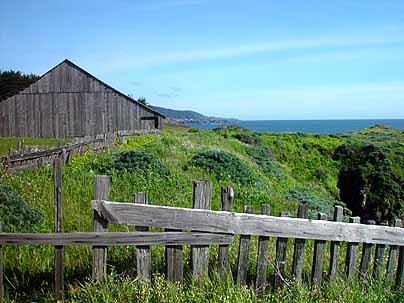 Starting in 1910, Walter P. Frick bought fragments of the ranch and unified them as the Del Mar Ranch. Ranching continued under Frick's ownership; however, he never lived at the ranch full time but maintained a summer cottage on the site of the present Del Mar Community Center. He leased the ranch to a group of Russian immigrants. It was Frick who had the hedgerows planted as windbreaks beginning in 1916, and who replaced the cattle with sheep. Frick died in 1937, and the ranch and sheep were auctioned off in 1941 for back taxes. Both were purchased by Margaret Ohlson and her four sons for $125,000, and the Ohlson family held it for 23 years. Both the Ed Ohlson house (which is part of the Del Mar Community Center), and the former home of brother Elmer Ohlson (which is near the Knipp-Stengel barn) were built during the 1950's. Starting in 1910, Walter P. Frick bought fragments of the ranch and unified them as the Del Mar Ranch. Ranching continued under Frick's ownership; however, he never lived at the ranch full time but maintained a summer cottage on the site of the present Del Mar Community Center. He leased the ranch to a group of Russian immigrants. It was Frick who had the hedgerows planted as windbreaks beginning in 1916, and who replaced the cattle with sheep. Frick died in 1937, and the ranch and sheep were auctioned off in 1941 for back taxes. Both were purchased by Margaret Ohlson and her four sons for $125,000, and the Ohlson family held it for 23 years. Both the Ed Ohlson house (which is part of the Del Mar Community Center), and the former home of brother Elmer Ohlson (which is near the Knipp-Stengel barn) were built during the 1950's.
Oceanic California, Inc. In 1963, architect and land planner Al Boeke recommended that Oceanic California Inc. (OCI), a division of Castle and Cooke, buy the land. He envisioned a unique community for people with a reverence for this rugged coast. OCI purchased the ten-mile stretch of California's Sonoma Coast comprising the 5,200 acre Del Mar Ranch from Ohlson for $2.3 million. Anxious to preserve the character of their new acquisition, Oceanic Properties translated Del Mar Ranch into The Sea Ranch and appointed a cadre of planners and consultants to conceive an entirely new approach to the residential/recreational development of the land. It was an environmentally sensitive approach which has been internationally acclaimed over the years since then, and widely imitated. Among those early planning consultants were:
*Al Boeke, architect and Vice President of Development
*Lawrence Halprin, landscape architect and land planner
*Charles Moore, William Turnbull, Donlyn Lyndon and Richard Whitaker, architects who formed the Moore, Lyndon, Turnbull, and Whitaker (MLTW) group
*Joseph Esherick, architect Lawrence Halprin coordinated extensive climate and ecological studies prior to development. He sketched a plan to tuck structures into the hedgerows, leaving broad stretches of open commons. The MLTW group developed plans for several areas: the first mega-structure condominium, the small recreation center now called Moonraker, and several houses. Joseph Esherick developed plans for the Lodge and several demonstration project houses, including the landmark Hedgerow Houses. These are identified on The Sea Ranch Design Awards map (available for a nominal fee at the Association office).
The original Sea Ranch concept directed that people would join the natural environment with minimal impact. Overgrazed lands were to be rested and natural processes allowed to take their course, with indigenous planting where needed. The Ranch would become a wildlife and game refuge. Improvements would involve a minimum of grading. Utilities would be located underground, and population density kept low. Residential design would allow homes to blend into and become part of the natural landscape.
Oceanic installed a nonprofit corporation of property owners, The Sea Ranch Association, to serve as stewards for the conservation and enhancement of the environment and administer Sea Ranch affairs. Concurrently, a Design Committee was established to guide and control improvements. Authority and planning for both bodies were vested in a comprehensive set of Covenants, Conditions and Restrictions, today popularly referred to as the CC&Rs.
With these plans in place, a Precise Development Plan for the southern one-third of The Sea Ranch was approved by Sonoma County in 1964. A similar plan for the northern two-thirds of the ranch was approved in 1968. At that time, the developer gave to the county the 124-acre Gualala Point Regional Park at the Gualala River estuary, followed by 25 acres east of the highway for campground use and a smaller site for County employee residences. The parks were part of the Master Plan agreement of 1968, in which the County accepted the park sites in lieu of multiple accesses through The Sea Ranch.
Impact of Coastal Commission
A new dimension to the use of the coast and its resources was introduced when the California Coastal Zone Conservation Act of 1972 (Proposition 20) was enacted. It established the Coastal Commission, a body of appointees charged with the protection of coastal resources. The Commission was to do this by interpreting-broadly, as it turned out-the intentions of California voters in passing Proposition 20. The complex actions of the Coastal Commission culminated in the Coastal Act of 1976.
For the next several years the Association, the developer, and the California Coastal Commission tried unsuccessfully to reach a mutually acceptable development program for The Sea Ranch. It was left to the California State Legislature to break the stalemate by passing the Bane Bill, which allowed building to resume on the developed part of The Sea Ranch. The Sea Ranch Association received a settlement of $500,000 in exchange for easements to five public accesses across Sea Ranch property to publicly-owned tidelands, fifteen view corridors from Highway 1 to the ocean, and other concessions.
Following the Bane Bill settlement, the developer and the Coastal Commission came to an agreement. In exchange for permission to complete a development greatly reduced in size, the developer agreed to donate 30 acres of land (now known as the Transfer Site) to the Coastal Conservancy. Other terms required that the developer include 45 units of low-cost housing. The undeveloped property (now called "remnant lands") was subsequently transferred to The Sea Ranch Association.
Some of the early planners' dreams succumbed to the pressures of real estate sales after the Coastal Commission reduced the original 5200 lots to 2429. Following the seven-year moratorium, development resumed and by 1983 was well under way again.
In 1986 OCI sold its timberlands at The Sea Ranch consisting of three sections totaling 1600 acres to Travelers Insurance Company. The Lodge, golf course what was then called employee housing was sold in 1988 to a private corporation, The Sea Ranch Village, Inc. The housing is now part of the 45- unit low cost housing owned and managed by Burbank Housing, Inc. of Santa Rosa, CA.
Litigation with Developer
In the latter half of the 80s, the imminent departure of the developer led to concern about several unresolved problems. Negotiations resulted in the TSRA acquisition of 154 acres of Remnant Land that stretch for 1.3 miles along the east side of Highway 1 opposite the old schoolhouse, 8.7 acres of corporation yard, and $400,000 to be used to improve inadequate roads and drainage, and to develop a plan for the use of commons for septic systems. The major unresolved issue was the lack of an assured long-term water supply which would protect the Gualala River in the dry summer months. When efforts to negotiate a settlement were unsuccessful, litigation was filed in 1988 to require the developer to provide an alternative water supply. In 1996 the issue was settled with the developer's agreement to construct a 300-acre-feet reservoir, a 500,000 gallon storage tank and a water treatment plant at the reservoir.
Central TPZ Acquired
In 1990 The Sea Ranch Board submitted to the membership a proposal for the purchase of the central section (circa 280 acres) of what is now called the Timber Production Zone (TPZ) from Travelers Insurance Co. It is one of three sections totaling 1600 acres that Travelers Insurance had purchased earlier from OCI. The referendum was defeated. However, in July 1992 the Association signed a purchase agreement of $849,000 with Travelers for the land that then was in the process of being logged, and escrow was opened upon completion of the logging. In late 1992 the northern section was sold to Gualala Redwoods Inc., who owns and harvests several thousand acres of timberland to the east of The Sea Ranch. The southern portion was sold earlier to a private party who constructed a large house on it. The central TPZ was converted to commons during the year ending April 30, 1997.
Today
There are 2304 lots on approximately 3,500 acres at the The Sea Ranch. With The Sea Ranch more than halfway to "buildout," the Board of Directors, its Design Committee, Community Manager, and the Director of Planning and Design face increasingly complex issues. However, our Association is enriched by a membership that cherishes the environment that inspired the dream of those who first sought to make history here on the North Coast. If lessons are to be learned from our history, we will evolve sensitive, sensible solutions to preserve that dream for generations to come.
Nature Hikes, Trail Use and Bike Paths on The Sea Ranch: meadow Miles of trails traverse The Sea Ranch coastal,and forest environments. For access, look for the trail posts or wave markers painted on the road. A trail runs along the headlands for almost the entire length of The Sea Ranch.
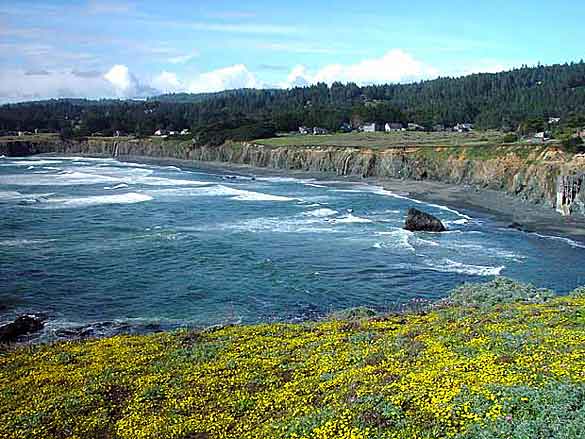
Trail access is provided through Common areas to bluffs and beaches. Please respect private property and keep to established trails. Natural Environment The Sea Ranch biological communities are home to an abundance of wild life. Even off shore, gray whales parade on their 6000-mile annual migration, in fall south to Baja, California breeding grounds and in spring north to arctic waters. In the rocky zone between low and high tides, a rich variety of marine life flourishes on the ocean's edge. Tidepools harbor a complex association of plants and animals including sea urchin, shrimp and seaweed's. You are invited to observe -- but leave what you see -- as this intertidal community is fragile and easily disturbed. Taking specimens from designated marine preserve is illegal. Harbor seals sun themselves on offshore rocks and ledges protected by tidal waters. On the beach, seal pups have a better chance of surviving if left untouched by humans. Seal haul out areas should be viewed from a distance that leaves seal families undisturbed. Forest, meadow and riparian communities shelter blacktail deer, raccoon, fox jackrabbit, skunk, opossum, gray squirrel and chipmunk. Occasionally bobcat, cougar, wild pig and even a bear or two can be seen browsing through the ranch. Feeding wild animals can make them dependent on humans for food, contrary to The Sea Ranch tenet of leaving wild things wild. The splendid variety of winged species makes bird watching a pleasure on The Sea Ranch. commonly seen are gull, cormorant, California quail, Steller's jay, sparrow, finch, woodpecker, marsh hawk, meadowlark, whitetailed kite, robin, swallow, raven, wild turkey and turkey vultures. Seasonally, the Monarch butterfly may be found in some hedgerows. Wildflowers bloom with abandon in the spring. From the blufftop trail one may see wild iris, lupine, California poppy, blue-eyed grass, ox eye daisy, buttercup, and a rainbow spectrum of blooms. Each meadow, hillside and wooded area has its own unique vegetation and combination of wildflowers. The Sea Ranch Trails Code
* Trail use is a privilege
* Respect the people, the land and the sea
* Protect wildlife and plants
* Safeguard streams, tidepools beaches and ponds
* Honor the property of others
* Go Gently and stay on trails
* Keep horses under control
* Keep dogs on leash, remove their droppings
* No bicycle riding on Blufftop Trail
* No smoking on Commons
* Be responsible for your own safety Safety
* You are responsible for your own safety
* Keep an eye on the Ocean! Incoming tides will rapidly inundate beaches and rocky ledges. Watch for sleeper waves
* Bluff edges frequently crumble and are extremely dangerous
* No bicycle riding on the Bluff Trail
* No motorized vehicle on any trail
* Keep pets on a leash -- It's the law
* Fire: During the fire season, dry forest and grasslands are an extreme wildfire risk. Smoking and fires on common areas are prohibited. Barbecues permitted only in the following common areas:
One Eyed Jacks and the Hot Spot. Ashes from fireplaces, stoves or barbecues must be deposited in a covered metal container until they are cold to the touch. Be sure the container is sitting on a non-combustible surface; never dump on the ground
* Hunting or discharge of firearms is prohibited Bicycle Trails Off-Road See the Sea Ranch map for off-road bike trails mostly on the meadows trails on the ocean side of Highway 1. In most cases the bike trails coincide with foot trails and horse trails. Note: Do not ride bicycles on the bluff trail. Timber Preserve - See the Sea Ranch map for area between units 29A and 27A on the east side of Highway 1. These bike trails coincide with food trails and horse trails. Note - Horses have the right of way. If dogs are brought along, please make sure they are on a leash. On-Road Bicyclists may ride the entire length of The Sea Ranch on Sea Ranch roads. (See the Sea Ranch map for details.) North to South - From Leeward Road (Unit 35E) follow Sea Ranch roads to the South end of Breaker Reach (Unit 21). Follow the bicycle symbol street signs through the bicycle links all the way to Moonraker Road (Unit 1). No Bicycle riding is allowed any further South from Unit 1 (except on Hwy 1). South to North - From Mooraker Road (Unit 1) pick up the bicycle link near the Moonraker Recreation area. Follow the bicycle symbol street signs all the way to Breaker Reach (Unit 21). Then follow The Sea Ranch roads to the North end. Note: Do not ride bicycles on the bluff trail.
|
|
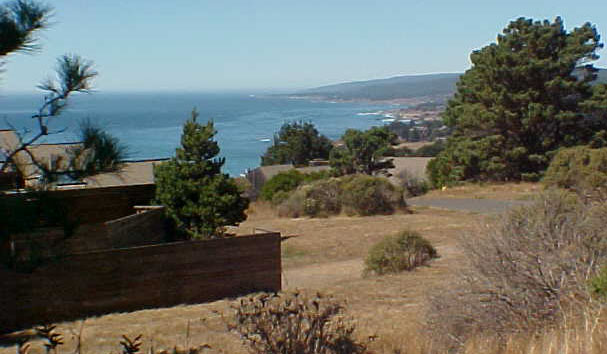
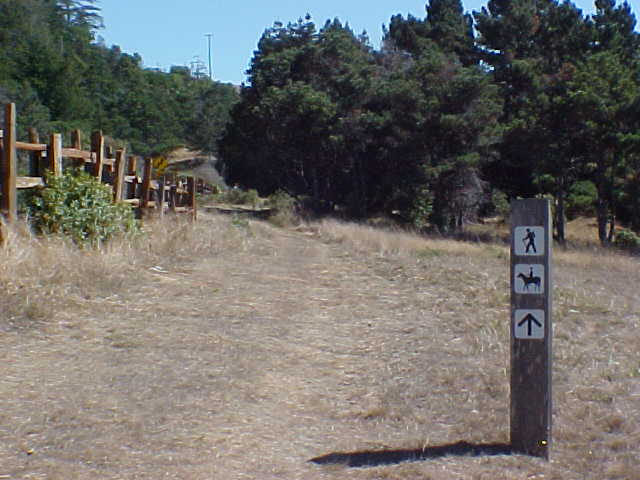
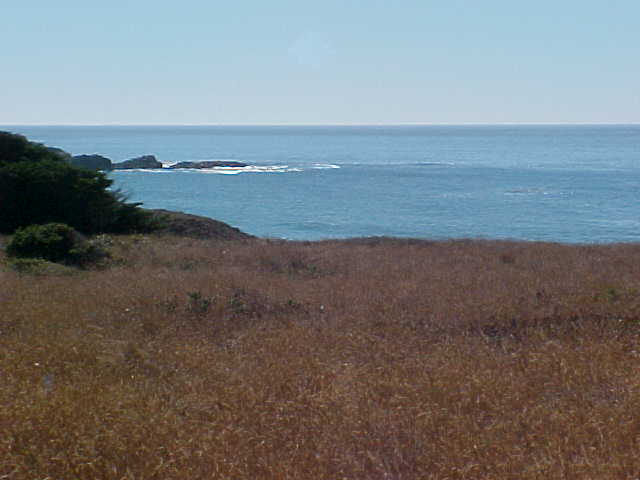
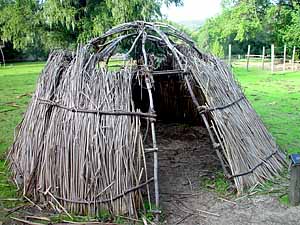 Settlement proceeded slowly. Access by land and sea was difficult, and navigation was hazardous. In 1846, Ernest Rufus, a naturalized Mexican citizen, received a land grant of five Spanish leagues stretching south from the Gualala River to Ocean Cove. Called the "Rancho de Hermann" and later simply German Rancho, it was one of the last Mexican land grants because California broke away from Mexico three months later. The previous year Rufus had invited another German, Frederick Hugel, to the land he had selected. Hugel built a cabin on the hill above the present Equestrian Facility, fenced in grassland, and built a warehouse near the bluff from which he planned to ship and receive cargo. He raised cattle and horses, and planted fruit trees, potatoes, green peas and other vegetables. Farming was continued after Hugel by German immigrants William Benitz and Charles Meyer.
Settlement proceeded slowly. Access by land and sea was difficult, and navigation was hazardous. In 1846, Ernest Rufus, a naturalized Mexican citizen, received a land grant of five Spanish leagues stretching south from the Gualala River to Ocean Cove. Called the "Rancho de Hermann" and later simply German Rancho, it was one of the last Mexican land grants because California broke away from Mexico three months later. The previous year Rufus had invited another German, Frederick Hugel, to the land he had selected. Hugel built a cabin on the hill above the present Equestrian Facility, fenced in grassland, and built a warehouse near the bluff from which he planned to ship and receive cargo. He raised cattle and horses, and planted fruit trees, potatoes, green peas and other vegetables. Farming was continued after Hugel by German immigrants William Benitz and Charles Meyer. Starting in 1910, Walter P. Frick bought fragments of the ranch and unified them as the Del Mar Ranch. Ranching continued under Frick's ownership; however, he never lived at the ranch full time but maintained a summer cottage on the site of the present Del Mar Community Center. He leased the ranch to a group of Russian immigrants. It was Frick who had the hedgerows planted as windbreaks beginning in 1916, and who replaced the cattle with sheep. Frick died in 1937, and the ranch and sheep were auctioned off in 1941 for back taxes. Both were purchased by Margaret Ohlson and her four sons for $125,000, and the Ohlson family held it for 23 years. Both the Ed Ohlson house (which is part of the Del Mar Community Center), and the former home of brother Elmer Ohlson (which is near the Knipp-Stengel barn) were built during the 1950's.
Starting in 1910, Walter P. Frick bought fragments of the ranch and unified them as the Del Mar Ranch. Ranching continued under Frick's ownership; however, he never lived at the ranch full time but maintained a summer cottage on the site of the present Del Mar Community Center. He leased the ranch to a group of Russian immigrants. It was Frick who had the hedgerows planted as windbreaks beginning in 1916, and who replaced the cattle with sheep. Frick died in 1937, and the ranch and sheep were auctioned off in 1941 for back taxes. Both were purchased by Margaret Ohlson and her four sons for $125,000, and the Ohlson family held it for 23 years. Both the Ed Ohlson house (which is part of the Del Mar Community Center), and the former home of brother Elmer Ohlson (which is near the Knipp-Stengel barn) were built during the 1950's.